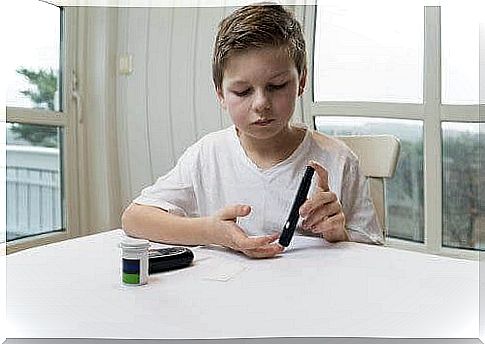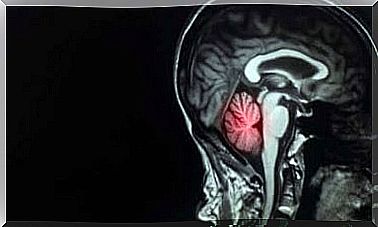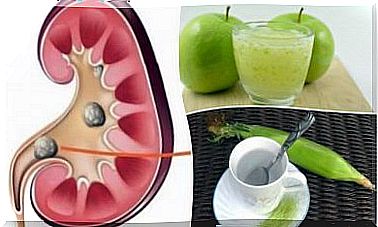Characteristics Of Juvenile Diabetes

There are two different types of diabetes, but the most common is type 1 diabetes or juvenile diabetes. This type of diabetes is insulin dependent, which means it requires an external insulin supply.
In general, it is the most common, as type 1 diabetes accounts for over 90% of the cases of diabetes that are diagnosed in children under fourteen years of age.
Diabetes is a disorder of the endocrine system that is characterized by a low production of insulin in the pancreas, which leads to the accumulation of high levels of sugar (glucose) in the blood. It is usually of an autoimmune origin as the body itself destroys the cells in the pancreas that are no longer functional.
On other occasions, insulin production may be normal, but cells may not use it properly due to a defect. This is mainly the case with type 2 diabetes.
Diagnostic criteria for juvenile diabetes
The diagnosis of juvenile diabetes consists of measuring fasting blood sugar levels (glycemia), which should not exceed 126 mg / dl. This is according to the criteria of the International Association of Pediatric and Adolescent Diabetes ADA-ISPAD 2014.
Blood sugar is high when fasting, so doctors will also perform other tests to confirm juvenile diabetes. They need to find out what type it is and rule out other diseases that also present with hyperglycemia. This is because the treatment of these diseases is different and the prognosis will be worse if it is not diagnosed in time.
After a diagnosis, the patient should start treatment immediately to check his blood sugar level. This also helps prevent the occurrence of ketoacidosis. This is because it can complicate the prognosis.

Frequency and age of onset of diabetes in children
Adolescent diabetes mellitus type-1 is increasingly common and typically manifests itself in the age from 1 day old to 14 years. Doctors diagnose approx. 10 to 25 cases for every 100,000 children in this age group. However, there is a marked increase in children under 5 years of age.
Also read: Parents of children with type 1 diabetes
Signs and symptoms of juvenile type 1 diabetes
To avoid misdiagnosis, doctors measure blood sugar levels for at least two separate days. They consider the following to be positive for type 1 juvenile diabetes:
- Blood sugar: More than 200 mg / dl.
- Blood glucose after eight hours of fasting: More than 126 mg / dl.
- Glycemia two hours after eating carbohydrates: More than 200 mg / dl
Patients with childhood diabetes usually show the 3 P chart:
- Polyuria: They urinate a lot.
- Polydipsia: They drink a lot.
- Noticeable weight loss.
Therefore, the typical scenario for a child with juvenile diabetes arriving in the emergency department usually shows these symptoms:
- Polyuria, which is sometimes responsible for bed wetting.
- Polydipsi.
- Weight loss, in part due to ketonemia (accumulation of acidic radicals due to improper sugar metabolism), which in turn leads to extreme weight loss.
- Sometimes there is non-specific abdominal pain and even vomiting.
- There is usually no fever.
- Great decline of their general condition in the form of drowsiness, weight loss and sunken eyes.
- Fast and low breathing and must do it through the mouth, leading to a dry tongue.
- Their breath “smells like green apples” due to ketoneemia.
- Finally, they usually maintain their normal blood pressure and central heart rate.

Differential diagnosis of juvenile diabetes
Although the most common cause of hyperglycemia is diabetes mellitus, it is important to consider the possibility of other diseases as well, such as:
- Cases of hyperglycaemia and glycosuria (presence of glucose in the urine)
- Stroke
- Intravenous therapy
- Dehydration with high levels of sodium in the blood
Symptoms of presentation of ketoacidosis:
- Sudden and severe abdominal pain
- Acetylsalicylic acid (aspirin) poisoning
- Recurrent ketotic hypoglycemia
The symptoms of severe ketoacidosis:
- Acetylsalicylic acid (aspirin) poisoning
- Hypoglycaemic episodes
- Hyperosmolar coma
- Stroke
- Lactic acid acidosis
Also read: Can cinnamon help control diabetes?
Treatment of juvenile diabetes
In general, the treatment of this disease aims to control metabolic levels and avoid complications that are both acute and chronic. These are typically the symptoms that can affect the development of children with adolescent diabetes.
In the treatment of juvenile diabetes, education and training of the child and the family is very important. This allows them to control the disease and avoid complications.

Thus, there are three basic pillars in the treatment of diabetes:
- First, insulin to provide adequate doses of this hormone because the body cannot produce or use it properly.
- Second, a proper diet to avoid overloading the insulin system by regulating the intake of carbohydrates.
- Third, exercise to increase the expenditure of glucose in the muscles and achieve a balance between what the person consumes and what they consume.
Fortunately, the treatment of juvenile diabetes has evolved a lot in recent years. The pharmaceutical industry offers all kinds of insulin. Generally, there are some with fast and some with slow actions. They allow better control of the disease.
Progress and expectations for available treatments
Fortunately, great efforts are also being made to get the right training and education of children regarding diabetes. However, some of the challenges are:
- Simplification of insulin delivery devices.
- Editing teaching materials to make them more interesting for children.
- Finally, holding courses, workshops and summer schools. These help children become aware of and normalize the disease.
The advances expected in the near future will make the life of the diabetic child easier, with systems and procedures, both diagnostic and therapeutic, requiring fewer needles and less frequency of insulin treatment.
In addition, we can also expect advances in new gene therapies and the synthesis of insulin compounds to improve the lives of patients. There are many children with diabetes. However, there is a bright future when it comes to controlling it.









